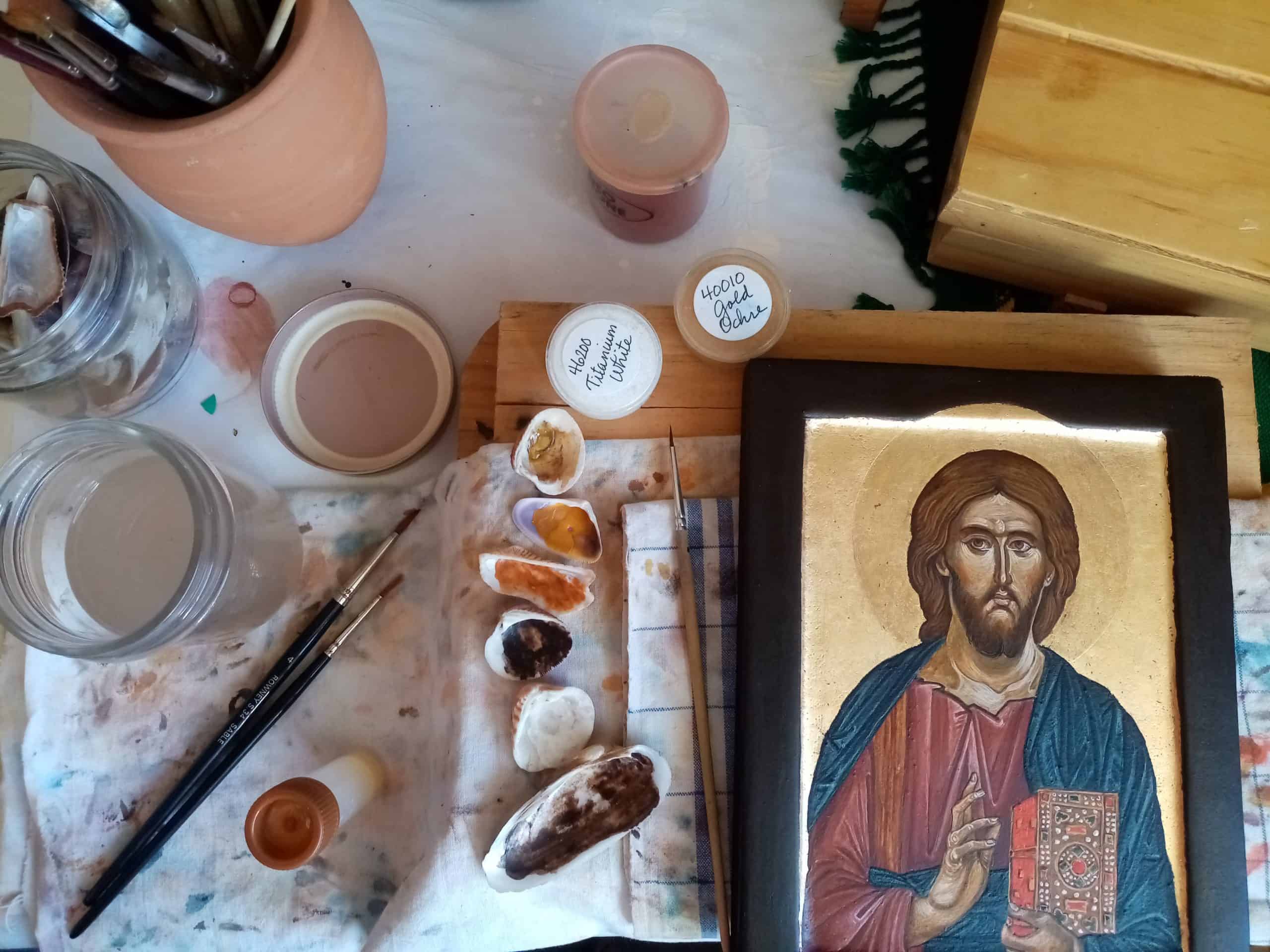After entering the Jesuits, I had to transform my relationship with the world of art. Art, especially religious art, has been present in my life since I was two years old. Religious art has been my passion since early on: It marks my way of relating to the surrounding world and my way of being a Jesuit. At an early age I began drawing what was most familiar: our Lady of Guadalupe, the Sacred Heart of Jesus, Christ on the cross, and angels.
When I entered the novitiate of the Society of Jesus, I thought “maybe I should give up painting” as I did with many other things, but I couldn’t separate myself from art that easily. Art poured out of me in the way I live, the everyday tasks: cleaning, praying, reading, exercising, etc. I would find myself buying cheap acrylic paintings, and questions would arise in my heart: what are you painting for? I found the answer in Orthodox Iconography.
I remember seeing icons as a child. But the world behind them was totally foreign to me. As a novice, I stumbled on the Pantocrator of Sinai icon, one of the oldest existing orthodox icons. This icon inspired my prayer and became part of my life. At first, I was trying to understand this image in a technical way: the colors, the paint brush strokes, the different materials, how was that striking face confronting me with those eyes. But as I spent more time with the image, my prayer changed. I began to allow Jesus to see me through this icon. And after a long eye to eye conversation, I made my first attempt with iconography using the cheap acrylics and boards. What happened next changed my whole relationship with art and with God. I found the vocation inside my vocation.
In 2019, I professed my perpetual vows of Poverty, Chastity, and Obedience. Then I moved to Guadalajara and began my Philosophy studies. In the middle of Aristotle, Plato, Zubiri and Heidegger, Iconography emerged like water from a fountain. It came with the help of a brother Jesuit: Alexander Zatyrka SJ. Like the parable of the friend who just keeps insisting, 1 Alex offered me a weeklong retreat in order to write my first Icon (icons are written like a prayer, not painted like a portrait or a landscape). I could barely contain the happiness. I was finally going to experience iconography. Before I could make my retreat to learn some finer points of iconography, the pandemic struck, and I was forced to settle for some simple tools in order to teach myself.
Like a child learning to walk, my first attempts at iconography felt a lot like stumbling: poor wooden board preparation, cracks on the levkas, 2 thick and cracked color layers, varnish troubles among other difficulties. Between those mistakes, the sense of God’s Presence became more obvious: God was inviting me to entrust my hands, my eyes and my whole being to God’s hands, God’s eyes… and so, the “visual dialogue” became our channel of communication. Every time I stand in front of that wooden board, in front of that white levkas, I say in the silence of my heart: “O Divine Lord… Enlighten and direct my soul, my heart and my spirit. Guide the hands of your unworthy servant so that I may worthily and perfectly portray your image…” 3 Then, the colors are clearly placed, the lines are formed with confidence and the gold leaf shines reflecting the flame of the candle.
After three years of self-taught iconography (and after three years of my Philosophy studies), my iconography has improved. I had to learn icon writing from watching videos on YouTube, texting other iconographers in the world (especially Europe and the U.S.), and in the practice itself. The most important thing in icon writing, and in praying before icons, is letting yourself be seen by the icon: Letting God place God’s sight on you, as you are, without any mask, without any obstacle; making it possible for divine light to illuminate through your whole being. Prayer with icons has made me more sensitive. Some icons are not usually aesthetically pleasant. Sometimes the features of the face, the expressions, are not very realistic, or even as beautiful as a Renaissance painting. In iconography the iconographer doesn’t invent, rather icons are copied from older icons.
And so, creativity is transformed to an instrument to open a window to Eternity. An iconographer doesn’t sign his name on the icons, he or she is not the protagonist: God is the one who authors the work in the visual window that enlightens the prayer, the home in which is placed the icon. The Iconographer becomes a humble and useful servant to let God’s light pierce the darkness of a world in such chaos. In the middle of a world that celebrates war and violence, in a world of art where one piece can make you a millionaire, recognized as the artist behind the piece. I renounce art to become an iconographer.
-//-
Photo and icon courtesy of the author.


